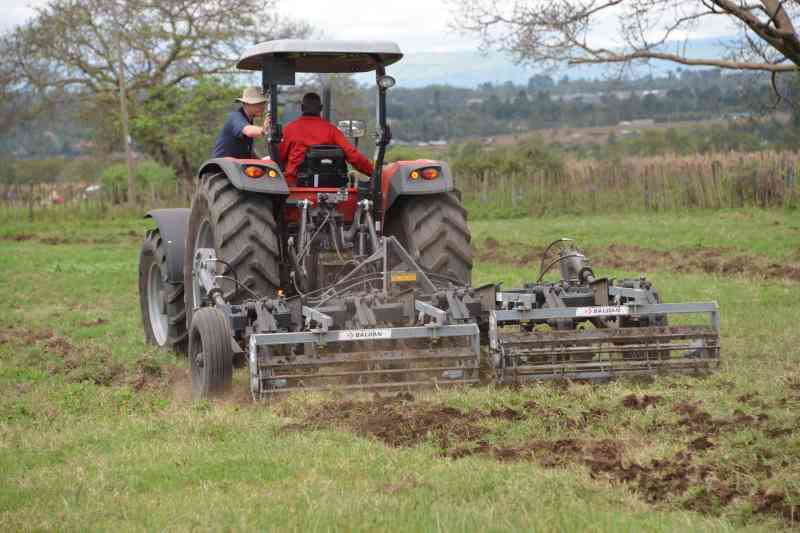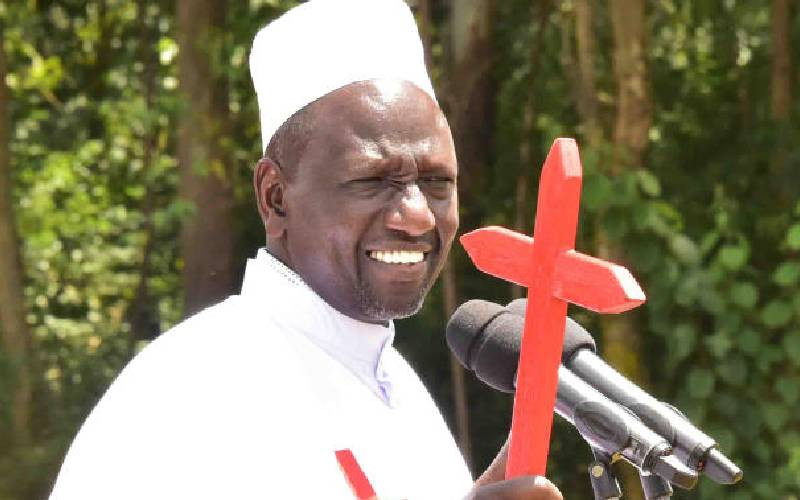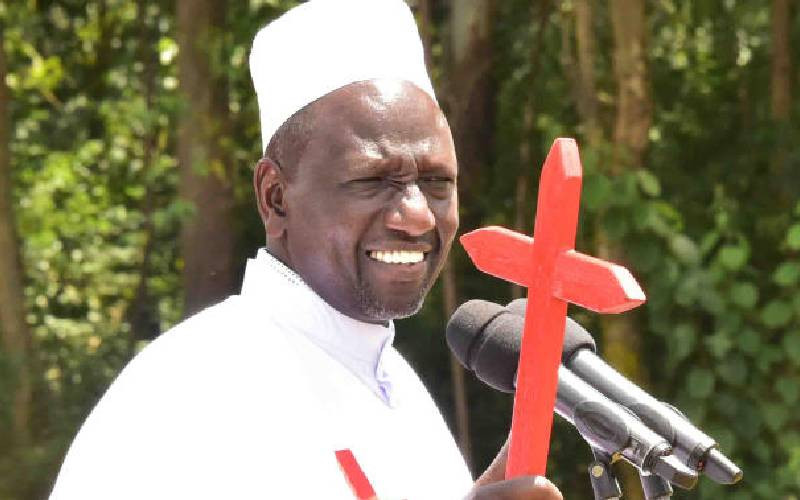Kenya's revised Gross Domestic Product (GDP) now stands at $55.2 billion (Sh4.75 trillion) or 25.3 per cent bigger than previously thought.
The new figures were released on Tuesday by the Kenya National Bureau of Statistics (KNBS) after changing the base year for the GDP calculation from 2001 to 2009.
With an estimated population of approximately 44.3 million, Kenyans are now richer on paper and enjoy a GDP per capita of approximately $1,246 (Sh107,280), up from a previous estimate of $994 (Sh85,583). This will make us cross the 2013 benchmark of $1,045 (Sh89,975) set by the World Bank for middle-income nations.
As expected, the exercise has generated debate with many terming this move a useless exercise that will not add food to 'our sufurias'.
Others have gone a little further and think it is in fact a ploy by the Jubilee administration to boost its ego and take a shortcut to 2030, the year when former President Kibaki's administration told us we would become a middle-income nation.
But is rebasing a meaningless exercise?
Cosmetic exercise
Whereas it is true that the GDP revision is merely a cosmetic exercise and may not immediately affect the daily lives of most Kenyans, there are nevertheless a number of principal benefits and important implications that will help improve the economy and, by extension, the lives of the citizenry in the long run.
First, there is nothing wrong with getting our statistics right. Rebasing our GDP just means we were ignorant of our exact wealth position in the past. The new knowledge does not actually change our wealth position; it only makes us aware of our real net worth and those charged with managing the economy will now have more access to credible information on the GDP.
Rebasing may change nothing but it means measuring better. It is meant to account for structural changes in economic activities, base prices and inflation trends.
Economic indicators are used to make critical national decisions that allocate scarce resources and it is absolutely vital that we ensure they are accurate. It could harm the economy if the Government or other stakeholders make judgements based on erroneous statistics. That is why best practice and the UN Statistical Commission (UNSC) in particular recommends that GDP be rebased every five years.
Second, the revised GDP will lead to some changes in the competitive landscape. The new size and status of Kenya's economy will definitely have a psychological impact on foreign investors. There are currently many foreign investors who have not considered us or even dumped us for other competitors, due partly to our inaccurate and not so up-to-date GDP data that showed impoverished consumer base with low purchasing power.
Also, if you are a frontier markets investor, you will look at, for example, the current stock market capitalisation to GDP ratio to see if there is an upside potential in that market. Our stock market capitalisation to GDP ratio is now down significantly based on these new numbers from the around 36 per cent it was prior to the rebasing.
Investors are generally interested in the upside potential of a market when making investment decisions. As an investor, I would see massive potential in Kenya with say a stock market capitalisation to GDP ratio in the 20s per cent to say South Africa, which has a 159 per cent stock market capitalisation to GDP ratio. For foreign investors, this would confirm that Kenya is a worthwhile market in which to invest.
Third, the revised GDP number and its composition has revealed more about the nature of the current economy. More interesting than just the size of our economy is its composition. The rebased GDP composition revealed that Kenya's economy is still diversified. The main contributing factors of the new GDP figures comes not so much from any dramatic differences in the structure of the economy in broadly defined categories, but rather from improved coverage and revised input-output production structures.
Stay informed. Subscribe to our newsletter
Agriculture remains the top driver of Kenya's economy and it, together with manufacturing and real estate, accounted for most of the change. Based on the old nominal series, the service industry made the largest contribution to the GDP at 53.9 per cent in 2013, while agriculture, manufacturing and mining and construction industries accounted for 28.9 per cent, 10 per cent and 7.2 per cent respectively.
The rebased data shows not much has changed in terms of the structure of the economy although the share of the service industry in 2013 has declined to 50.7 per cent and agriculture has gone up to 29.5 per cent. Our agricultural output, while seemingly impressive, is actually underperforming its peers with its mostly subsistence method of cultivation and low productivity.
The real estate and ICT sectors has seen the largest increase in value added following the rebasing and gained more significance. The real estate sector is in fact the star performer in the country's rebased GDP figures. Its 8.2 per cent contribution to the GDP while impressive has, however, happened without a comprehensive plan by the Government. You can imagine how much this sector can be improved if constraints to the sector's growth like notoriously problematic transferability of titles and poor mortgage uptake despite huge unmet demand for housing are addressed. The rebased sectorial GDP numbers will help the policy makers address such gaps.
Finally, the revised GDP number will impact on key dependent ratios such as debt to GDP, fiscal deficit to GDP, trade to GDP, tax to GDP etc, vis-a-vis the country's peers and the impact on foreign investors' perception of Kenya. These ratios are not just mere statistics, as they have policy implications. The expected lower debt to GDP and deficit to GDP post-rebasing, for example, will give the Government some breathing space to borrow and drive national development through infrastructure development.
Assuming that more allowance for borrowing will translate to growth projects, then, it means the rebased GDP will translate into better infrastructure for the country. On the other hand, prior to the GDP rebase, our tax revenue's contribution to GDP looked quite impressive and was second best in the continent (to South Africa's). The rebasing means a lower contribution from tax revenue to GDP, creating a wide gap as to the extent to which the taxman is able to generate revenue to Government coffers. It is also possible that the National Treasury may have to revise projected future economic growth rates. The larger the economy, the lower the rate of growth. It is usually much easier to grow when you are small than when you are big.
The GDP rebasing is definitely a positive move and a great achievement for the country. But rebasing is not an end in itself. It is a means to an end.
Vision 2030
We still need to do a lot more to achieve Vision 2030 targets. I have seen some even say that we have attained the Vision 2030 goal 16 years ahead of time. That is malarkey. We need to understand the fact that Vision 2030 is a long-term development plan meant to transform Kenya into an industrialised middle income status; industrialised being the key words. The rebased GDP estimates shows we are a lower middle income country as per internationally known benchmarks. So no one has and can claim that we have indeed reached Canaan. But we have just left Egypt.
We should use the revised position as legitimate ground for keeping our current and future governments on their toes and as a premise upon which we should begin to question our policy makers on why a middle income country such as ours should also be such that 4 in 10 of its citizens live below poverty line earning less than a dollar a day.
—The write is the Senior Vice President, Financial Risk Management, Riyad Bank, Saudi Arabia.
 The Standard Group Plc is a
multi-media organization with investments in media platforms spanning newspaper
print operations, television, radio broadcasting, digital and online services. The
Standard Group is recognized as a leading multi-media house in Kenya with a key
influence in matters of national and international interest.
The Standard Group Plc is a
multi-media organization with investments in media platforms spanning newspaper
print operations, television, radio broadcasting, digital and online services. The
Standard Group is recognized as a leading multi-media house in Kenya with a key
influence in matters of national and international interest.
 The Standard Group Plc is a
multi-media organization with investments in media platforms spanning newspaper
print operations, television, radio broadcasting, digital and online services. The
Standard Group is recognized as a leading multi-media house in Kenya with a key
influence in matters of national and international interest.
The Standard Group Plc is a
multi-media organization with investments in media platforms spanning newspaper
print operations, television, radio broadcasting, digital and online services. The
Standard Group is recognized as a leading multi-media house in Kenya with a key
influence in matters of national and international interest.








